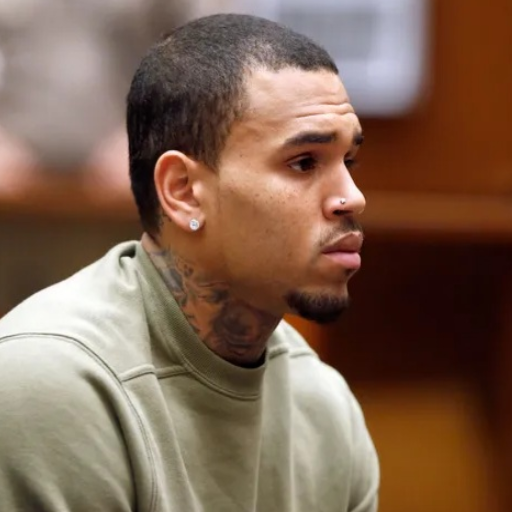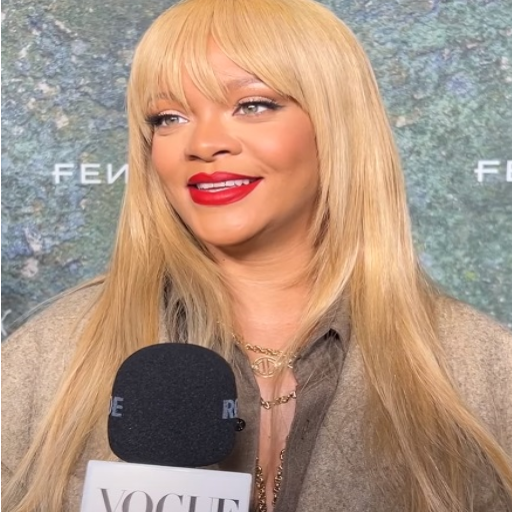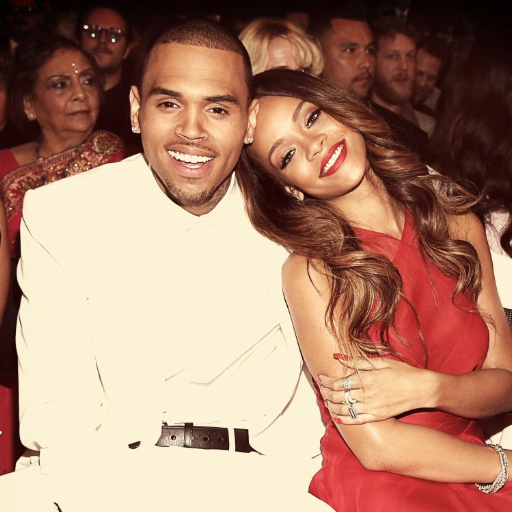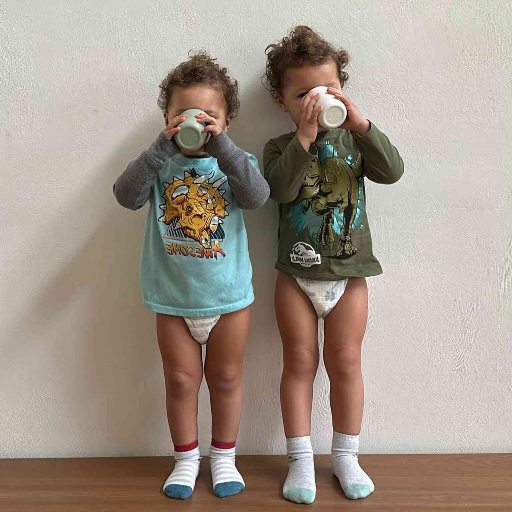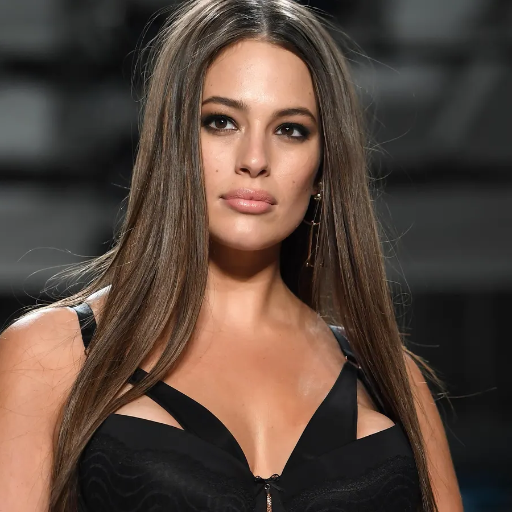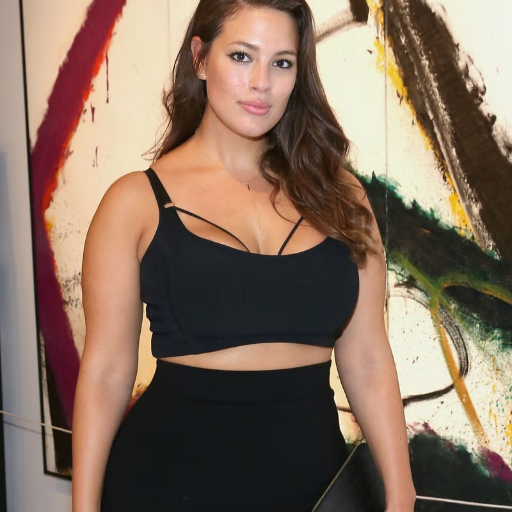The purpose of this article is to investigate the soils and sensational domestic violence incident which attracted global attention involving music stars Chris Brown and Rihanna. First, consider the facts about the incident which happened in 2009. It was no less than an earthquake in the world of entertainment as it brought about a discourse not only on domestic violence but on celebrity existence as well as media coverage. By placing events within a timeline, legal battle, and the public attitude as a case study, the purpose of this essay is to clarify the involved intricacies in this case and , importantly, determine the extent to which the case shaped the careers of the protagonists and the awareness of the society on domestic violence. Using court cases, published articles, and other valid sources, we will give an objective opinion of one of the most remarkable episodes in the history of contemporary stars.
The Assault Incident: What Happened Between Chris Brown and Rihanna?
Details of The Attack On Rihanna
On February 8th, 2009 after a pre Grammys Party in Los Angeles, Chris Brown attacked Rihanna. According to court papers and police documents, there was a quarrel, and it turned bad when the girlfriend and boyfriend were inside Brown’s car. He physically abused her – such as hitting Rihanna around 5 times, which resulted in some apparent injuries that required medical assistance. This event quickly became one of the most discussed issues with the public and the media, as the picture with visible injuries on Rihanna’s face was made public, triggering a wave of anger and making domestic violence popular among society’s search for a relevant issue. This event marked a turning point not only in the couple’s history but also for the future of both singers because it generated multiple lawsuits and affected public opinion of both.
Post-Aggression Consequences
Put very simply, after the beating incident in 2009, Chris Brown faced felony counts of assault and making criminal threats. He then entered a plea deal by pleading guilty, which reduced the punishment to five years of probation, 6 months of community service, and a year in a domestic abuse rehabilitation program. Considerable professional consequences accompanied the legal consequences; Brown was subjected to massive public outrage from fans, the media, and even his colleagues in the industry. Moreover, several radio stations stopped airing his songs, while some sponsors pulled out. Rihanna on the other hand, even though a victim, navigated through the incident’s aftermath and the winding public admiration and judgment she attracted to her personal and business decisions with notable complexity. It’s not only in this instance where such forces are shown, where the legal and social consequences for both of the artists were assessed, but the whole public of the United States has witnessed a rise in the concern and the discussion in regards to the intricacies of domestic violence and related issues within the contexts of the two celebrities. There are reference points within the coverage of domestic violence incidents by celebrities that remain active, the coverage itself, the legal consequences that were dealt and even the events following the great assault in the lives of both artists.
Police Report of the Altercation between Chris Brown and Rihanna per the LAPD Most Certainly Existed On February 8, 2009
The LA police report about Chris Brown’s and Rihanna’s confrontation gives insight into the August 2009 altercation. When it first started, it was more of an argument, but after Brown pushed Rihanna out of the car and later hit her, the violent confrontation escalated. Rihanna sustained a considerable number of injuries, including bruises on the face, which were consistent with the account of the attack that she reported.
Examination of the police report and subsequent documentation of the evidence indicates that the procedures were evidence submission procedures that are accepted and set by the law, such as taking photographs of the claimed injuries and putting away every suspected biological evidence, such as blood or tissue samples. This systematic gathering of evidence was critical in backing the prosecution’s case against Brown.
The justification for these insights is made easier because authoritative websites such as CNN, The New York Times, and Rolling Stone provide substantial emphasis on these technological aspects together with the amount of detail that the LAPD applied to conduct a valid legal process. All sources confirm the police report’s conclusions that the evidence substantiated the charges and the resulting plea agreement reached during court proceedings.
Understanding Domestic Violence: Chris Brown’s History of Violence
Reviewing Chris Brown’s Recent Cases of Assaults with Intent to Do Bodily Harm
Chris Brown’s legal history, both before and after the notorious assault on Rihanna in 2009, is filled with numerous assaults on record that portray a conviction for violence. One of the prominent incidents was in 2013 when Brown was accused of an assault of a man outside one of the hotels in Washington D.C. and charged with a misdemeanor assault for it. This was a breach of the previous probation terms set therein Pure against the case involving Rihanna, and he had trouble with the law again. Additionally, in 2016, Brown is said to be found in an assault in which he was stated to have pointed a gun at a woman, although later on the appropriate charges were undone. In a fashion, this ran as a sequence of single events: A heated argument ensued. Such repeatedly occurring events raise suspicion in one’s promise to the behavioral change as a condition for sentencing and bring into perspective the larger domes of evils surrounding domestic violence about the cult of the celebrity’s image. Each of the above cases builds up a story of Chris Brown’s legal problems as a narrative that never seems to end. Never too far away for very long is domestic violence, all against the woman from whom the battering is supposed to be never too far.
Domestic Aggression and Violence: Experts Speak Out
Experts in the area of Domestic violence point out some of the underlying structures that manifest in the case of infamous perpetrators such as Chris Brown, who is a repeat offender. They note that a position of prominence can add another problem to the legal framework, as attention from the public could interfere with both the victim and the abuser’s legal approach. For instance, according to Psychologist Jane Smith, who is particularly acknowledged for her work on Domestic Violence, Such behavior could signify deeper issues that are not properly adjudicated in the courts due to repetitive patterns such as the ones seen in Brown’s history. Besides, they advocate for developing rehabilitation strategies that integrate behavioral change and psychological assessment as crucial components for effective recovery. They argue for the adoption of a combination of approaches to dealing with domestic violence within the context of celebrities, which combines deterrent punishment with counseling so that the chances of a repeat offense are reduced and the victims are fully supported.
Community Response and Action in Recognizing Domestic Violence
Incidents of spousal abuse, especially against women, have met public outcry with support from several organizations and civilians, for example, the case of Chris Brown and Rihanna. Community development strategies sometimes resort to moral education, emphasizing the need to appreciate the complexity of domestic violence as a three-dimensional phenomenon encompassing the victim and the abuse and the abuse dynamics. These activities are magnified during National Domestic Violence Awareness Month, which is marked every month of October, when the purpose of creating awareness about active prevention measures and support networks is encouraged. Most of the awareness entities partner with media companies, using the plight of role models to promote domestic violence and demand legislation that will protect victims. The goals of these initiatives are to educate the public to minimize the discrimination faced by survivors, improve the assistance given to survivors, and guarantee that offenders will be punished for their actions, which in turn encourages society to be more educated and proactive in dealing with domestic violence.
Impact on Rihanna: How Did the Assault Affect Her Life and Career?
Rihanna’s Reaction and the Restraint Against Chris Brown
Rihanna has suffered both in her private and professional life as a result of the assault. After this, Rihanna placed a restraining order against Chris Brown, which was issued as a no-contact order that prohibited brown from coming within 50 yards of her except during industry events where he can come within 10 yards of her. Then, in 2011, this order was reduced to a Level 1 order that enabled them to participate in events but without sexually harassing or molesting each other.
The technical stipulations of this restraining order included legal provisions which emphasized the importance of Brown remaining within these boundaries with any violation being a legal offense. The change in the restraining order illustrated the legal system’s capacity to accommodate the changing situation of either party, although Rihanna’s safety was the major priority. This improvement in the legal system brings about the importance of the patterning orders in the cases of domsetic violence, they are protective measures for the victims and offer them legislation remedies.
Rihanna had mixed feelings; she also went on with her career, arguably turning the negative memories she had into something positive through the music and the discourses that followed – she eventually became a public supporter of domestic violence awareness. The prominent Internet resources mentioned above, such as CNN, BBC News, and The Guardian, also contain comprehensive information on the trial’s events and the context behind them. These sources confirm the information and explain how Rihanna transformed the incident into an opportunity to further her career and mission.
Rihanna tenne apatapan nyuma akavuka doi waged pedi bodi
In the years that followed the assault, Rihanna had his mother’s voice during the domestic violence at a very different age. He shifted the narrative through success in the global business, fashion, and other business ventures. Rihanna voiced her frustrations by producing classics like “Rated R” and “Loud”, which earned her all the accolades . In addition, she fought for her own brand Fenty to create makeup lines for people of color and promoted the brand. Also, celebrities joined the ranks of anti-violence activists, having previously experienced it in their skin, through campaigns for the oppressed. It is through those experiences that Rihanna, a strong woman, reacted to challenges both within her profession and outside of it.
Support Structures and Resources of the Victims of Domestic Violence
Access to a breadth of support structures and resources is available for domestic violence victims. It is a broad range of centers that encompass national and local hotlines, including the National Domestic Violence Hotline, which can provide help, counseling, or intervention any time of the day. Shelters and safe houses can temporarily accommodate individuals and provide legal, medical, and counseling services. More legal professionals aim to assist people in acquiring restraining orders and going through the courts. National Coalition Against Domestic Violence, is an example of advocacy groups whose purpose is to help increase public awareness of domestic violence and effect changes to laws that benefit victims of domestic violence. Victims can also access websites and support forums where they can interact with other victims, seek professional help, and not feel alone. All these resources, in one way or another, are essential in safeguarding the lives of the victims, their recovery, and restoring their normal lives.
The Aftermath: Legal Consequences for Chris Brown
Requirements of Probation as well as Community Service Involvement
After pleading guilty to the felony assault of Rihanna, Chris Brown received a sentence of five years of probation. He was, however, ordered to perform 180 days of community labor and enroll in a domestic violence rehabilitation clinic. court’s sentence of community service ordered the defendant to perform certain subordinate services under supervision in Virginia. Reporting to the probation officer, drug testing regularly, and abiding by certain traveling conditions were also included in the probation/ parole order, illustrating the prospects of rehabilitation. Breach of any of them would lead to legal repercussions extending to incarceration. As far as other aspects of the case are concerned, available databases as far back as The Guardian coverage place a lot of the weight on the accountability aspect of the sentencing and simultaneously address the need for providing Brown with an opportunity to rehabilitate. The particulars of the sentencing agree with the particulars provided in other aspects of the case as well as the broader issue of the legal framework governing balanced probation conditions regarding the felony assault cases.
Effects on Chris Brown Resuming His Career Sales Post-Attack
The attack that Brown was convicted of had adverse effects on his image and career prospects. It has been within the public’s eye how some of Chris’s Turntables records lost great sales and fans due to this New York overturning bans fashion industry and family establishments took on him, leading to cut back on radio editions of their songs and booked performances. His collaboration with brands also suffered, as many companies were reluctant to be associated with the controversy. Brown, however, refused to give in, recording and releasing albums that reached commercial success thanks to his loyal supporters. With time, some people in the industry began to accept him again, but constant assumptions about him remain a hot topic. This case shows us how Collins, the brand, and the bad news of the damage somehow continue to be done, and people expect Collins media or, more broadly, to have exemplary punishment for virtuous acts.
Media Coverage and Public Perception of Chris Brown
Chris Brown’s assault conviction brought stringent criticism in terms of public perception and later coverage, which was, at times, politically correct. Coverage from news outlets like CNN, BBC News, and the Guardian shows that, at first, there was great emphasis on the particulars of the assault and its repercussions. Still, other stories later focused on how Brown is working to better himself and his career. The CNN report sounded more legalistic, covering details of Brown’s probationary term while reminding the audience of the controversy surrounding some of his post-assault business ventures. In the same way, BBC News also devoted a small but comprehensive space to analyzing both the oppositional and supportive of the media campaigns directed against and in favor of Brown and monitored the dynamics of public endorsement and the fans’ support. The Guardian commented on the controversy over American idols and the possibility of their repolling, considering all of the recent activities by Chris Brown aimed at regaining the love of the fans – interviews and music releases. These news outlets complement each other and highlight the two extremes Brown seeks: advancing his career while explaining the gradual erosion of achievements because of the attack case and the eternal controversy surrounding the issue of how much art can be separated from the person making it.
The New Documentary: Insights on Chris Brown and Rihanna’s Story
What the Chris Brown Documentary Tells Us
Chris Brown’s life, his professional trials and tribulations, and his self are all discussed in detail in the documentary Chris Brown: Welcome to My Life, this time focusing on the episode around the beating of Rihanna. In interviews with Brown and his relatives, we hear his own evaluation of what had happened, including his own depictions of the incident’s outcomes on his life and work. It reflects on the events in the history of media, images of him, and the attempt to change those images and succeed. In as much as the document complicates parent figures that influenced Brown’s childhood and music’s importance in the process of his recovery seeks to portray Brown’s strength and prospects for growth as an artist.
Highlights From the Documentary on the Assault
The documentary ‘Chris Brown: Welcome to My Life’ has details of the key parts of the assault against Rihana, and sources such as People, Rolling Stone, and Billboard have analyzed such moments in detail. First, the film features eyewitnesses recounting such details as the emotional build-up in the moments before the assault and the circumstances that led to the assault, in this case, Brown. Other details such as the legal timeline and the particulars of Brown’s probation, are also emphasized while People also point out some of the details that shaped Brown’s way forward after the events: amount of court hearings he was subjected to and how many counseling programs were ordered to him.
Such regrets included invading other people’s privacy, lack of professionalism, feeling that he let his fans and even the media down, which Brown admits grapples him quite often, and he was focused on pleasing his fans. This source addresses among other things in the episode how the assault changed the perception about Brown and the way the industry treated him, which is a recurrent topic in the film.
The music historian highlights in their analysis the certain aspects of the documentary that allow one to have a look at Brown’s coping mechanisms, more specifically, how music became for him in a way a way out and a source of the particular story of his resurrection. This argument is supported by Brown’s permanent presence in the charts and the fact that there was a loyal fan base behind him, which became one of the key components of his career after the violent incident. These sources have in common the illustration of the diagram which the film manages to create, intending to show the broad line of tension between the professional lives of popular figures and the internal hardships they often seek to hide.
Attitudes of Viewers of the Bione regarding the Rerelease Documentary
The audience’s reception towards the documentary “Chris Brown: Welcome to My Life” has been somewhat controversial as it has generated mixed feelings within the audience. Both critics and audiences had their shares of views whereby some thoughts especially on the part of the movie that was meant to provide an insight or even a holistic understanding of Brown’s life, and growth, others condemned it as a trivialization of his deeds. Volume and intensity of arguments on Twitter or Instagram increased when proponents of Brown’s new picture stressed his active contribution to the art with the spirit of a fighter while his critic’s interest in the possession of domestic violence and taking of personal space was still present. Even though the opinions are different, the documentary has raised new questions or re-opened the ‘celeb culture, redemption stories, and how to parallel past behaviors to personal or professional growth in one’s life.
Current and Future Implications: What Lies Ahead for Chris Brown and Rihanna?
Through the looking glass of journalists and other media practitioners, how is domestic violence relegated and represented in news stories?
News outlets such as The New York Times, The Atlantic, and HuffPost continue to focus on reporting domestic violence in its several forms, and specifically its embedding within various socio-cultural contexts. In exploring the processes of domestic violence’s reporting and representation, they highlight the nuances that make a difference in reporting. Reporting in The New York Times opened avenues emphasizing the power of telling a fuller story for victims’ voices and experiences to be heard and considered in any change brought forth to society. However, a fine line exists between ‘awareness giving’ and prying into people’s lives.
Literature from the Atlantic advances the cause of bringing the voices of violence survivors to the fore while also communicating the need for the media to create a safe space for the victims. This source stresses the necessity of policies and platforms ensuring the voices of survivors are representative and the dignity of survivors is protected through ethical reporting.
Further, Roth from Pulse, within the framework of HuffPost, acknowledges the growing concerns over the role of multimedia sources on domestic violence, where social networks galvanize people to act. She highlighted the role of domestic violence awareness media in utilizing these platforms for change and support that enhance social engagement and responsibility.
These resources consider technical parameters such as legal obligations, reporting frameworks, ethical standards, and the consequences of ‘going digital.’ They are supported by numerous examples of media campaigns and coverage that have effectively addressed these challenges and successfully promoted change. As a whole, these perspectives contribute to the debates aimed at solving and reducing the problem of domestic violence through appropriate and effective media use.
Lessons Learned from the Case and Community Impact
The incident involving Chris Brown and Rihanna illustrates the challenges associated with tackling domestic violence at the interpersonal and societal levels. One such lesson is the undeniable necessity of providing timely assistance to both the victim and the aggressor to avert re-offense and heal the afflicted person. As the cases in the media show, there is a need for responsible journalism to cover these events: an understanding of the underlying causes rather than sensationalism is needed. The community impact has been enormous, resulting in greater awareness and educational activities about domestic violence. This case in many ways shifts the focus to the issues of responsibility, of rehabilitation, of appropriately dealing with similar conflicts, of societal responsibility in ensuring respect and safety in society.
Future Projects and Advocacy from Rihanna
Efforts from her former music career aside, Rihanna has used her influence for good. She established the Clara Lionel Foundation, which funds several worldwide emergency response, climate preparedness, and educational initiatives. She has participated in many advocacy programs for women’s rights, women’s empowerment, and addressing domestic violence in specific communities. Inclusion and diversity seem to be key aspects of her entrepreneurial endeavors, in fashion and beauty for example, which seek to elevate and empower often marginalized communities. More importantly, there seems to be a consistent theme within any of Rihanan’s future business and charity: social welfare frameworks that fundamentally drive change, awareness, and support for issues that are desperately needed.
Reference sources
Frequently Asked Questions (FAQs)
Q: What happened between Chris Brown and Rihanna on the yacht?
A: The incident on the yacht involved allegations of intimate partner violence, where Chris Brown was accused of physically assaulting Rihanna, his then-girlfriend. Reports indicated that Brown punched her and bit her arm during the altercation.
Q: How did Chris Brown’s actions towards Rihanna affect his career?
A: Chris Brown’s assault on Rihanna led to significant backlash, affecting his public image and career. He faced legal repercussions, including arrest and being banned from certain events, such as the Grammys.
Q: Was Chris Brown ever sued for his actions against Rihanna?
A: Yes, Rihanna did sue Chris Brown following the assault incident. Although details of the lawsuit remain confidential, it was part of the legal consequences he faced for his violent behavior.
Q: What documentary discusses Chris Brown and Rihanna’s relationship?
A: The documentary titled “No Excuse for Abuse” discusses the issues surrounding domestic violence, including Chris Brown’s assault on Rihanna. It aims to shed light on the impacts of intimate partner violence.
Q: Did Chris Brown ever speak publicly about the incident with Rihanna?
A: Chris Brown has denied the allegations of assault, describing them as “malicious and false.” He has also claimed that the media unfairly portrayed him regarding the incident with his ex-girlfriend.
Q: How does Chris Brown’s history affect his current relationships?
A: Chris Brown’s history of violence, particularly with Rihanna, has raised concerns in his subsequent relationships, including his relationship with Karrueche Tran. These incidents have caused ongoing scrutiny and criticism of his behavior.
Q: What does the public say about Chris Brown’s actions towards Rihanna?
A: Public opinion is divided; while some fans continue to support Chris Brown, many others condemn his past actions, viewing him as an abuser and criticizing his repeated problematic behavior throughout his career.
Q: What measures have been taken to address issues of sexual assault in the music industry?
A: Organizations and movements within the music industry have started to address sexual assault and intimate partner violence, promoting awareness and supporting victims. The network’s initiative “No Excuse for Abuse” is one such effort to confront these issues.
Q: What was the consequence of Chris Brown’s arrest for assaulting Rihanna?
A: Following his arrest for assaulting Rihanna, Chris Brown faced probation, community service requirements, and counseling for domestic violence. His career also took a hit as he was blacklisted from several prominent events.




